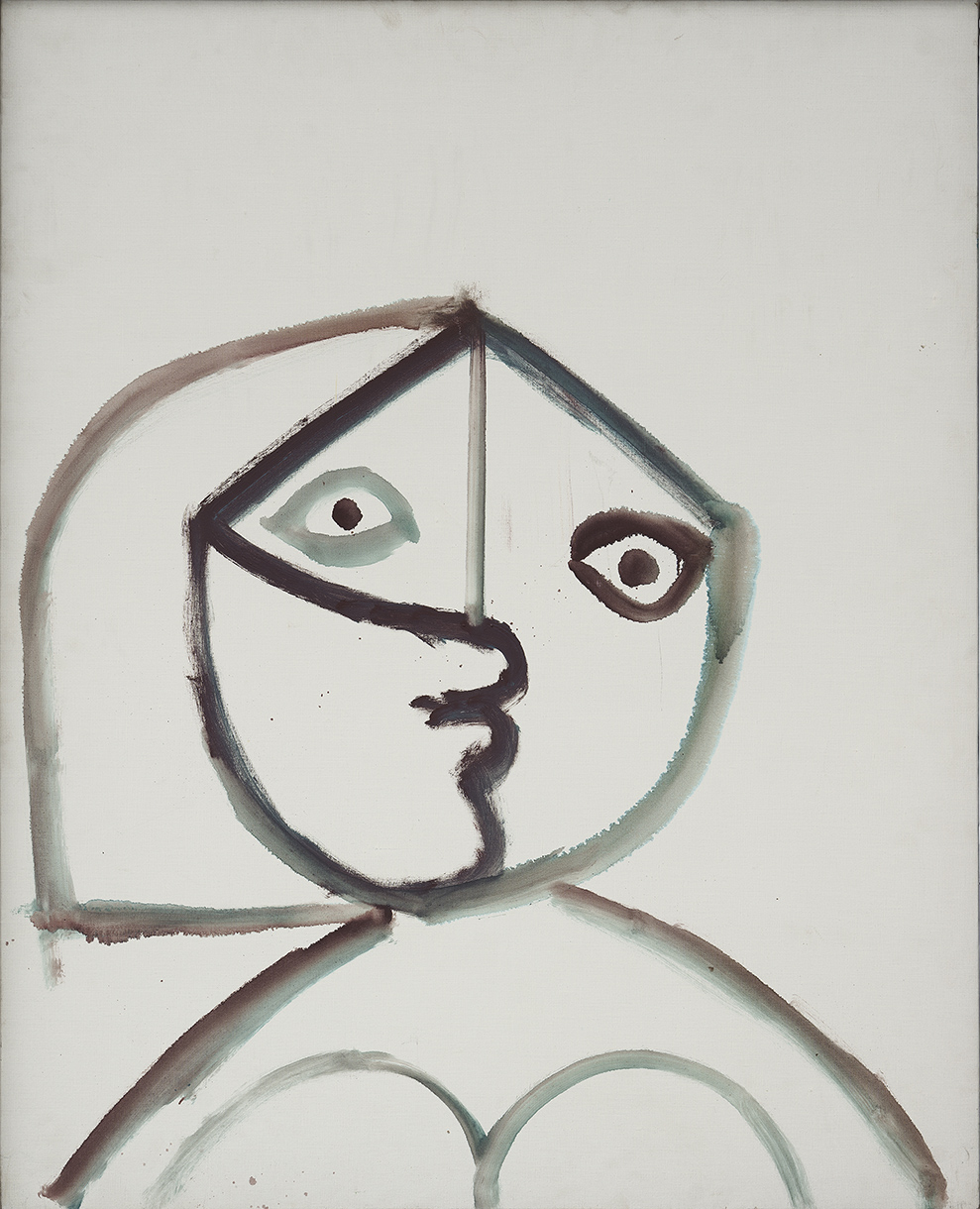
Pablo Picasso, Buste de femme/Kvinnobyst, Mougins, 11 juli 1971 (I). Fundación Almine y Bernard Ruiz-Picasso. © Succession Picasso/Bildupphovsrätt 2025. Foto: Hugard & Vanoverschelde © FABA
Bust of a Woman, 1971
Pablo Picasso
Runtime: 01:36
Narrator: This painting comes from an unusually well-documented working day late in Picasso’s career. On 11 July 1971 he completed three significantly different canvases – this swiftly painted bust of a woman, a larger seated nude and a more heavily worked head of a man smoking a pipe. Together they illustrate how, in a single day, Picasso could test entirely different pictorial solutions rather than pursue a single, unified style.
Here, painting is reduced to its most concentrated form. With only a few forceful brushstrokes, Picasso constructs the entire image – contour, volume and presence. A couple of sweeps define the hair; a few lines shape the face and body. The rest of the canvas remains almost untouched.
Eyes, nose, mouth and breasts appear as codified signs rather than anatomical volumes. Art historian Marie-Laure Bernadac has described how, in his final works, Picasso developed a kind of pictorial shorthand: a simple curve might say a breast. For him, it was no longer a matter of representation, but of expressing the motif as swiftly and clearly as possible.
Jacqueline, his wife and principal model during the last two decades, may have been an inspiration here. Yet in the painting the figure becomes more idea than portrait – shaped by movement and memory.
In Bust of a Woman, the brushstrokes carry traces of both speed and precision, revealing an artist in his nineties still exploring what a single line can convey.